


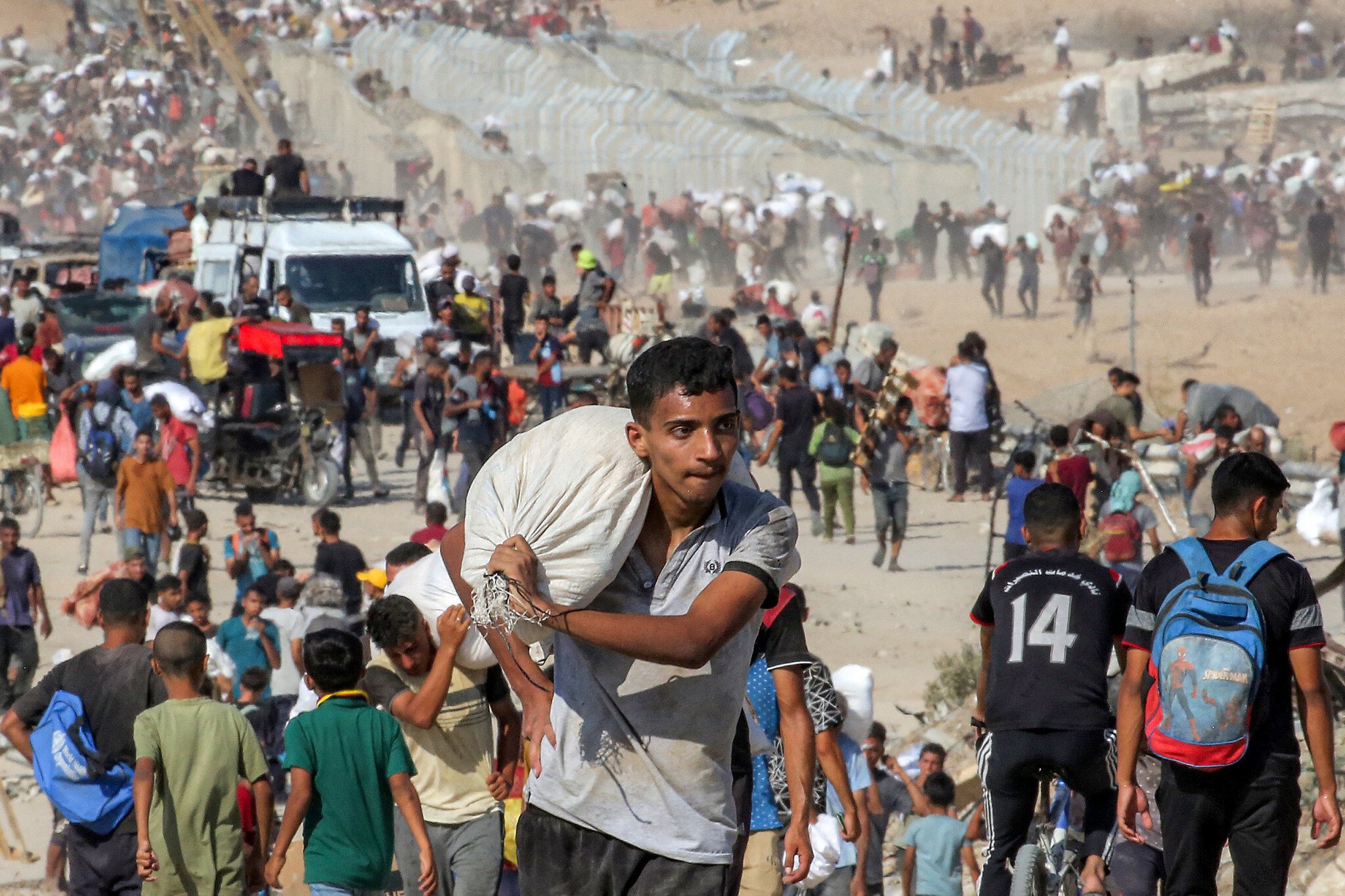
After a UN hunger monitor on Friday declared for the first time that famine had struck northern Gaza, Israel vehemently denied the reports as “lies” and “modern blood libel,” and the United States appeared to dismiss the declaration as part of a “false narrative of deliberate mass starvation” from Hamas.
Earlier Friday, the United Nations Integrated Food Security Phase Classification (IPC) system officially declared a famine in parts of the Gaza Strip, saying that an estimated 514,000 people — or nearly a quarter of the enclave’s population — are experiencing famine, and that number is expected to rise to 641,000 by the end of September.
The IPC report stated that data analyzed between July 1 and August 15 showed clear evidence that thresholds for starvation and acute malnutrition have been reached. Gathering data for mortality has been harder, the monitor acknowledged, but said it was reasonable to conclude from the evidence that the necessary threshold has likely been reached.
Israel swiftly denied the report, saying that the IPC relies on Hamas sources and accused the system of having “twisted its own rules” in declaring a famine.
In a statement later Friday, the Prime Minister’s Office called the IPC famine declaration an “outright lie” and “modern blood libel.”
“Israel does not have a policy of starvation. Israel has a policy of preventing starvation,” the PMO said.
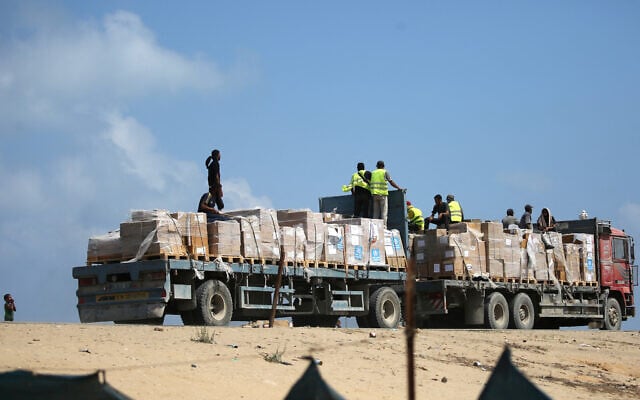
The statement said the report by the IPC ignored Israel’s humanitarian efforts and failed to mention a drop in the prices of oil, sugar, salt, flour, yeast and chickpeas in Gaza that the PMO attributed to the entry of aid into the Strip. The source of the information on the prices is unclear.
Citing data from the Defense Ministry’s Coordinator of Government Activities in the Territories, the PMO said that Israel has facilitated the entry of millions of tons of aid into Gaza since war there was triggered by the Hamas onslaught of October 7, 2023.
The statement also said the controversial US- and Israeli-backed Gaza Humanitarian Foundation, as well as NGOs facilitated by Israel, have served millions of warm meals to Gazans.
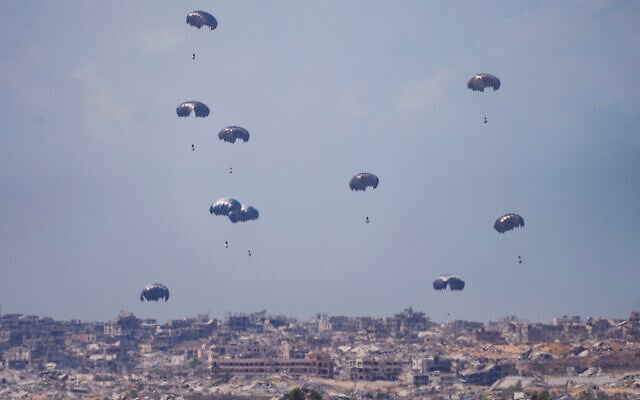
On the other hand, the PMO cited UN data as saying that in July, “of 1,012 aid trucks collected, only 10 reached warehouses; the rest were looted before distribution.” The PMO also accused the UN of having refused to deliver “hundreds of pallets of food” from the Kerem Shalom Crossing.
The PMO did concede there had been “temporary shortages” of aid in Gaza “which Israel overcame with airdrops, maritime deliveries, safe transport routes and GHF distribution points manned by American companies,” but blamed the shortages on “Hamas’s systematic theft.”
The statement did not mention the 11-week aid blockade Israel imposed on the Strip following the collapse of the last ceasefire-hostage deal on March 2.
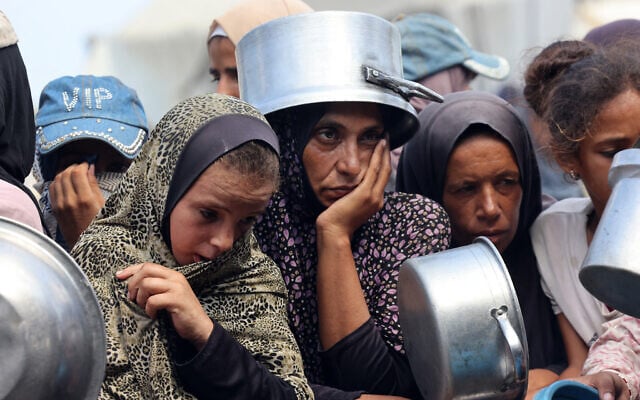
Similarly, the Foreign Ministry accused the IPC of releasing a “fabricated report to fit Hamas’s fake campaign,” after global hunger monitor declared famine in large parts of the Gaza Strip.
The Foreign Ministry claimed that the monitor “twisted its own rules and ignored its own criteria just to produce false accusations against Israel: the IPC changed its own global standard, cutting the 30% threshold to 15% for this report only, and totally ignoring its second criterion of death rate.”
To track hunger in Gaza, IPC used the Mid-Upper Arm Circumference (MUAC) measurement, as opposed to the weight-for-height Z-score (WHZ).
Under MUAC, 15% of people measured need to be identified as acutely malnourished in order for a famine to be declared, whereas the threshold for WHZ is 30%. Israel has accused IPC of lowering its own criteria in order to conclude that there is famine in Gaza. In its report, the UN agency explained that it used the MUAC measurement instead of WHZ because the former is easier and cheaper to track amid the challenging wartime conditions.
The Foreign Ministry asserted that the IPC report in its entirety “is based on Hamas lies laundered through organizations with vested interests,” and added that the report “will be thrown into the despicable trash bin of political documents.”
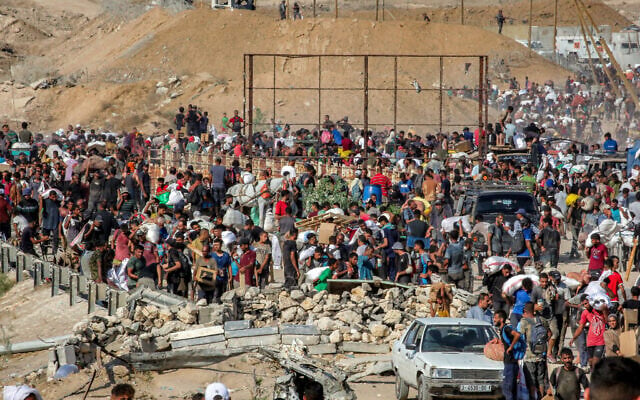
Also pushing back on the report, the US State Department said that it was “looking into credible reports that the IPC recently changed its definition for what constitutes a famine.”
The US also appeared to reject the approach and the conclusions reached in the report, with the State Department spokesperson saying that the “challenging issues of getting aid to Gazans means honestly addressing problems for the sake of Gazans, who deserve better, not engaging in semantics.”
The spokesperson clarified that the US still thinks the humanitarian situation in Gaza is a “serious concern” and that Washington is working to find ways to deliver aid to Palestinian civilians in an active war zone where the Hamas terror group is trying to remain in power.
“Hamas is systematically promoting a false narrative of deliberate mass starvation to put political pressure on Israel,” the spokesperson asserted.
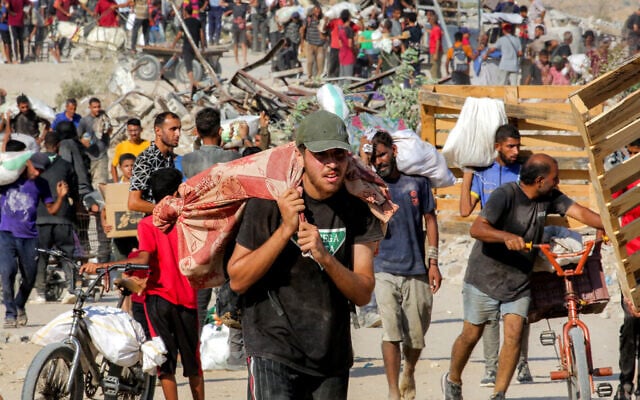
The US statement pointed out UN figures that show the vast majority of its trucks coming into Gaza over the past two months have been looted, arguing that food is going into the Strip but is not reaching those who need it most. Notably, the figures cited are from May 19, when Israel lifted its aid blockade over Gaza after 78 days.
Aid organizations say that the blockade helped spur the current hunger crisis and that the 22 months of war have led to a collapse of the humanitarian response in Gaza that was necessary to ensure that food continued reaching vulnerable populations at earlier stages of the war.
The State Department spokesperson said the US is focused on “getting aid to the people in need while implementing safeguards to prevent Hamas from stealing and looting the assistance.”
